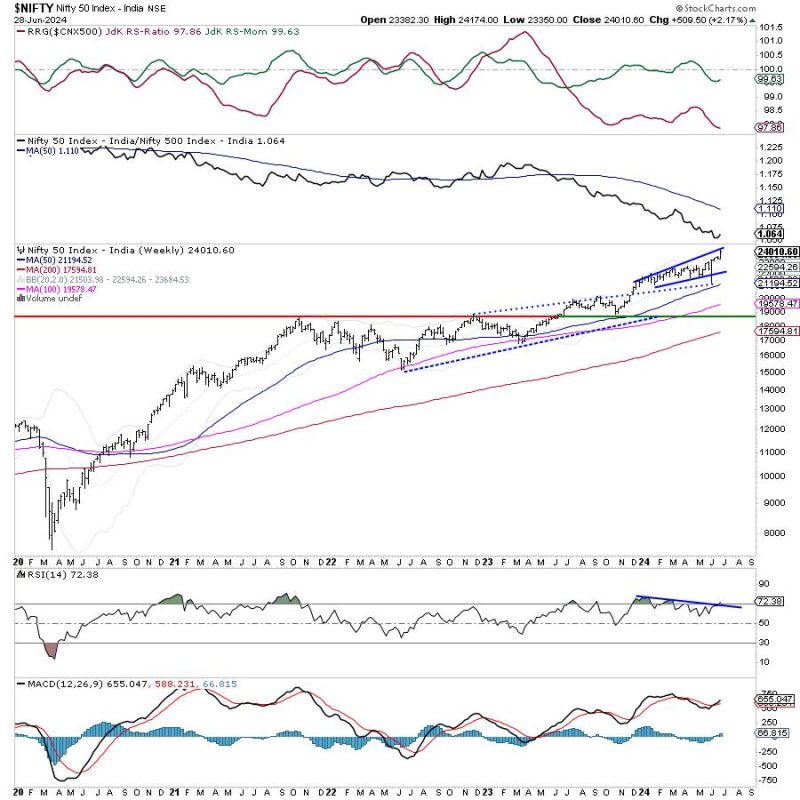The Nifty Fifty, as it is commonly known, is a collection of widely traded stocks on the National Stock Exchange (NSE) of India. The Nifty index is composed of 50 actively traded stocks across various sectors, representing a diverse array of companies in the Indian equity market. Investors and traders closely monitor the Nifty index as it serves as a barometer of the overall market sentiment and economic health in India.
In recent trading sessions, the Nifty index has encountered resistance in a specific zone, prompting investors to exercise caution and secure profits at higher levels. Chart patterns and technical indicators suggest that the Nifty may face challenges in sustaining its upward momentum within this resistance zone.
Market participants are advised to remain vigilant and establish defensive strategies to protect their gains as the Nifty approaches this critical resistance area. Traders should closely monitor key support and resistance levels, along with potential market-moving events, to make informed trading decisions in the weeks ahead.
While the Nifty has demonstrated resilience and a bullish bias in recent months, it is essential to acknowledge the evolving market dynamics and potential headwinds that could impact the index’s trajectory. Factors such as global economic trends, geopolitical developments, and domestic policy decisions can influence market sentiment and drive volatility in the Nifty index.
Investors with a longer-term horizon may consider adopting a prudent approach by diversifying their portfolios, managing risk effectively, and staying informed about macroeconomic indicators and sector-specific trends. By staying disciplined and adhering to a well-defined investment strategy, investors can navigate market uncertainties and capitalize on opportunities presented by the dynamic nature of the Indian equity market.
As the Nifty continues to create resistance in the current zone, investors are reminded to exercise caution and implement risk management strategies to safeguard their investments. By maintaining a balanced and rational approach to investing, market participants can mitigate potential downside risks and position themselves to capitalize on favorable market conditions in the weeks ahead.




























